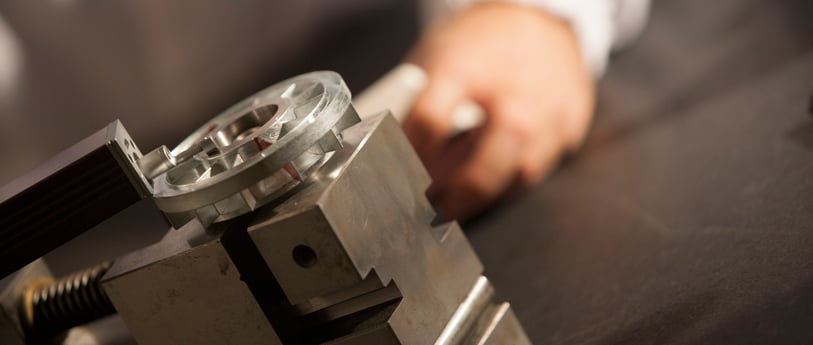As winner of numerous international awards, Bruschi Spa is known for its innovative approach in design and technology. We are glad to share our insights and experiences with the industry members.
Die casting defects: Internal and Superficial
The main die casting defects which occur during die casting can be divided in categories related to different phases of production process: die casting, pre-finishing, machining operations and surface finishing. In particular in this article we are going to analyze defects related to the first category: die casting.
It is important to remember that not every defect can be avoided during die casting phase, but it is necessary to focus on mold design. This happens because during production phase it is possible to act on a limited number of parameters and sometimes to solve a problem the designer can only modify mold design.
Die casting defects : explaining their characteristics
Casting defects are caused by an incorrect filling or solidification phase and they can be divided into two category:
Internal:
- Gas porosity
- Shrinkage porosity
- Inclusions
Superficial:
- Cold laps
- Laminations
- Blister
- Cracks
- Lakes
Internal defects
These kind of die casting defects are more difficult to find and are responsible for weakening component structural resistance.
Gas porosity
Due to fluid high speed during filling phase turbulences are generated, these turbulences can include air or other gases. During solidification phase, if gas concentration is not homogeneous inside casting, air bubbles generate cavities which weaken resistant sections of component.
These cavities are rounded and can be shiny or opaque, depending on gas type entrapped during filling phase: for example air, water or lubricant.
Shrinkage porosity
Shrinkage porosity defects are created during solidification and cooling phase of casting. They are created due to material shrinking and for this reason are widely spread in massive parts.
During solidification phase, the material tend to move near colder zones, for this reason, due to different temperature between casting surface and core, cavities are concentrated inside the part. The morphology of these cavities has an angular shape.
In some cases there is the risk of creating cavities on component surface if part and runner geometry is suitable for hot spot setting up.
Inclusions
In zinc alloys intermetallic compound can be created: in particular the most common is FeAl3, which is a compound of iron and aluminum.
Is important to say that these compound are tougher and have a different colour than zamak alloy: for this reason can cause problems during following phases of mechanical and finishing process.
Moreover with components under mechanical fatigue stress concentration and cracks can be created.
Superficial defects
These kind of casting defects are visible and worsens component surface and its aesthetical quality.
Cold laps
Cold laps are the most common die casting defects: they are caused by irregular flows and low temperatures. Cold laps include a wide selection of defects such as flow marks or lack of material. Depending on defect rate components can have a poor surface quality or in the worst case it can be incomplete.
This phenomenon is generated from matching two or more flows of material which, due to low temperature, oxide formation and dirt inclusion, flows welding is incomplete or absent.
Laminations
Laminations can be classified as part of cold laps category. They are generated from overlapping of two layers which are always separated during filling phase.
These defects are difficult to detect after die casting, while they appear after finishing or pre-finishing operations like tumbling and sand blasting. During these phases, the impact between inserts and casting causes lifting of subtle zinc layers.
In the middle of these layers other fluids and dirt of die casting process like lubricant or oil can be hidden. These substances can come out during surface treatment like painting or galvanization and worsen the outcome.
Blisters
During mould filling phase, air inside the mould and machine is compressed, and one part is ejected from the casting using vacuum valve, chill vent or overflows. Air remained inside the component can be dissolved inside the melted metal with an homogeneous distribution. Due to many turbulences, air is concentrated creating high pressure cavities.
Very often, if the component does not have high temperature extra operations, this die casting defect is hidden and causes diminishing of component strength; otherwise in processes like powder painting where the temperature is higher, gases inside the casting expand and generate bubbles on the surface.
Cracks
Cracks are material breakage caused by stress inside and outside the material.
The first ones are created during solidification and cooling phase: due to cavity geometry material is not allowed to shrink in its natural directions, what results is residual stress that can generate cracks inside the mould or deformations after ejection.
The second ones are caused by external forces on components: these forces can be found during parts ejection from the mould or cutting phase.
Lakes
These kind of defects are seen in aesthetical components: are caused by different solidification time of the filled metal which in some part of the casting generates a different skin from the surface. This area is fine grained and appears different from the rest.
If you want to be updated on trends and innovations in die casting industries, please subscribe to our blog; and if you have any comments or questions, please feel free to fill in the form here below.


